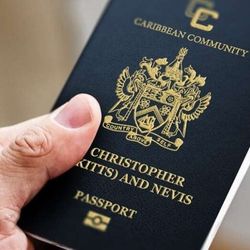In 2020, Black Lives Matter became a mainstream political and cultural movement that spread across the globe. For many people, it came out of nowhere.
But the eruption of protests and anger —and the reckoning they inspired — were the culmination of years of grassroots activism and growing frustration amongst the Black community in the US.
In fact, while BLM officially started in 2012, in many ways this is just the latest chapter in a fight for equality that has been taking place for centuries.
And BLM is fighting for much more than recognition of the basic humanity of Black people in America and the world over. BLM’s goals benefit us all, and will help shape a brighter future for everyone.
In this guide, I’ll show you why supporting Black Lives Matter is so urgent and necessary, how doing so will help many people in our society, and the easiest ways you can get involved.
1. Stats on Police Violence and Racial Discrimination in the US
To understand the importance of BLM we must first understand the plight of the Black community.
Much of Black Lives Matter’s policy focuses on reforms to policing and other major institutions that are prejudiced.
Racism is not just experienced on an individual level, it is also structural and institutionalized.
Understanding these two terms and their effects is imperative. Structural racism refers to the social, political, and economic systems of our society that manifest inequality in ethnic minorities.
This could mean social or historic ideologies that ultimately result in worse income, employment, or healthcare for Black families.
Institutional racism refers to the institutions themselves. The way that political and social laws and policies within these institutions perpetuate the oppression of an ethnic group, whether intentional or not.
This could be at your school, university, or workplace, and could take the form of something as simple as a ban on religious dress, or a certain hairstyle.
Understanding these two terms, and how structural racism drives institutional racism, is crucial as they demonstrate the ways our system is rigged against ethnic minorities.
From governments to big businesses, racism is woven into the fabric of our societies. Here are some statistics that show the extent of institutional racism in America.
Police violence is the number one cause of death for young Black men in the US. Overall, 1 out of every 1,000 Black men in the US will be killed by a police officer.
Black men are 2.5 times more likely than white men to be killed by police. Black Americans are significantly more likely to be incarcerated for drug offenses, despite drug use being much more common in white populations.
Black Americans earn 42% less than white Americans on average. Black Americans make up 33% of the US prison population, despite only accounting for 12% of the overall population.
Black males aged 18-19 are 12.7 times more likely to be arrested than white males in the same age group. 93% of white workers don’t believe racial or ethnic discrimination occurs in their workplace.
However, 42% of Americans have witnessed racism taking place at work. Black and Hispanic Americans make up less than 2% of executive roles in Fortune 1000 companies, despite the two groups representing 31.4% of the overall population.
In the early months of 2021, state legislatures run by the Republican party introduced 361 bills across the US that would restrict voting rights and make it more difficult for Black and poor Americans to vote.
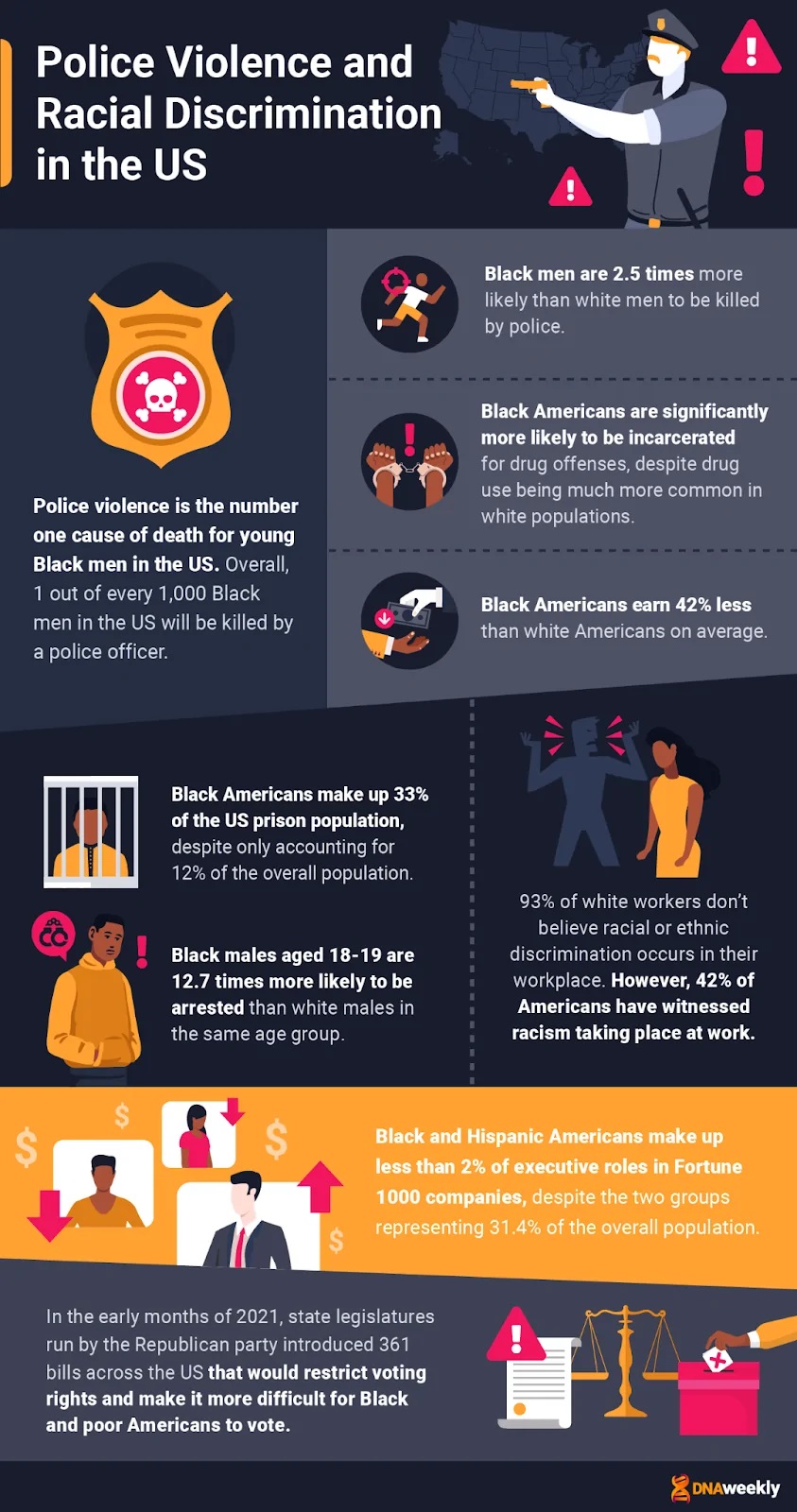
2. Stats on Police Violence and Institutional Racism Around the World
Though BLM focuses on American institutions and racism, the movement has grown to support the plight of Black people in countries across the world.
Racism is not just a problem in the United States. Police violence, structural, and institutional racism is an international scourge that manifests itself in corporations, laws, and populations.
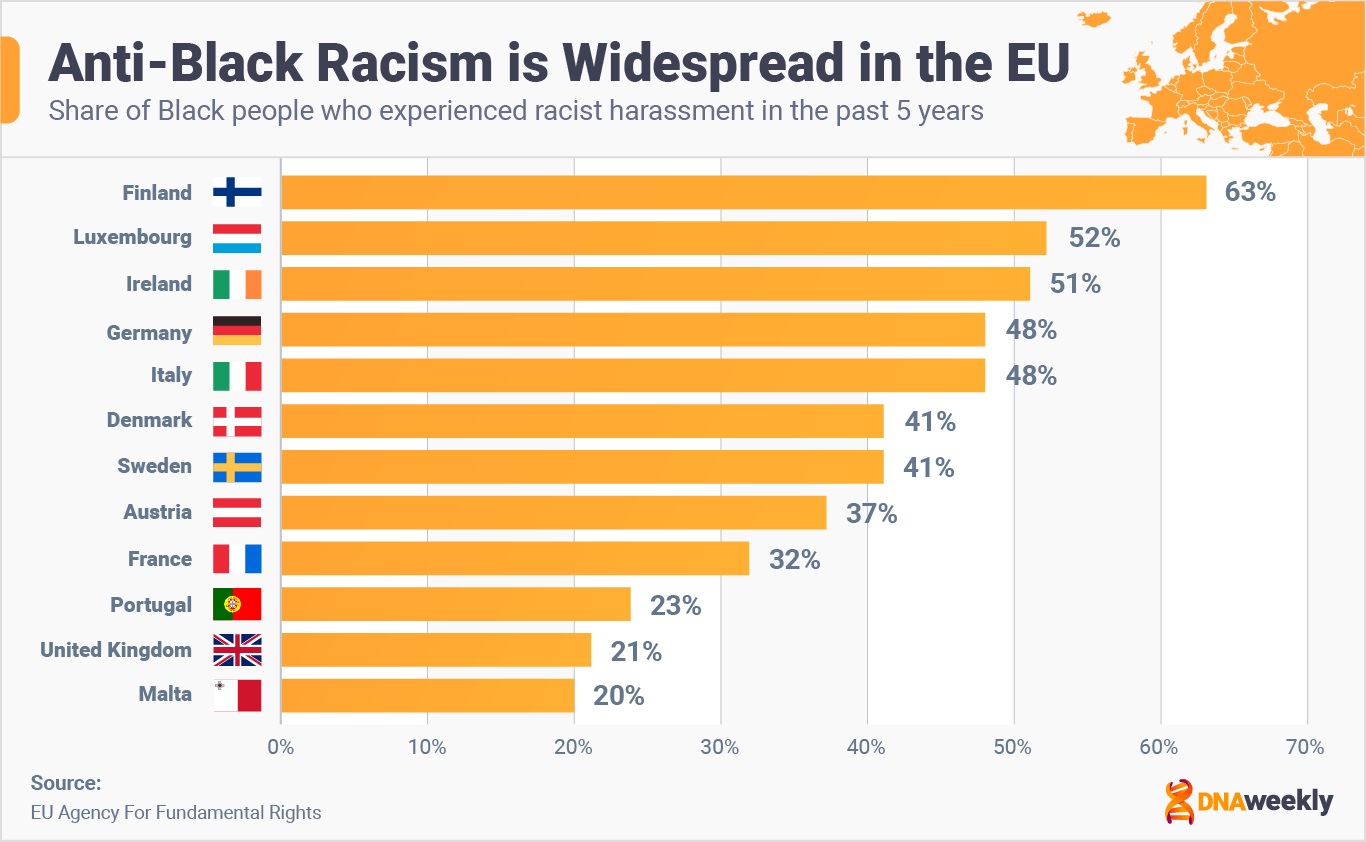
It cannot be ignored as a problem in another destination, it’s present in your country too.
Here are the stats that show institutional racism around the world:
In Finland, 63% of Black people have experienced racial harassment in the last 5 years. In the European Union, only 14% of cases of racial harassment are reported by victims.
29% of adult prisoners in Australia are from Indigenous groups, despite only accounting for 3% of the population.
Aboriginal and Torres Straits Islander people are the most incarcerated people on the planet.
Between 2007 and 2017, a third of people shot by Canadian police were from indigenous groups — despite indigenous people only accounting for 5% of the population.
In New Zealand, Maori and Pacific Islanders make up 25% of the population, but account for 66% of people shot by the police.
95% of young Black British people experience racism at school. In England and Wales, over 76,070 racist incidents were reported to police in 2019 and 2020.
That’s an increase from 53,902 in 2015 — and doesn’t include incidents that were not reported. In England and Wales, Black people are 8 times more likely to be stopped by police than white people.
Black Caribbean children are 3 times more likely to be excluded at school.
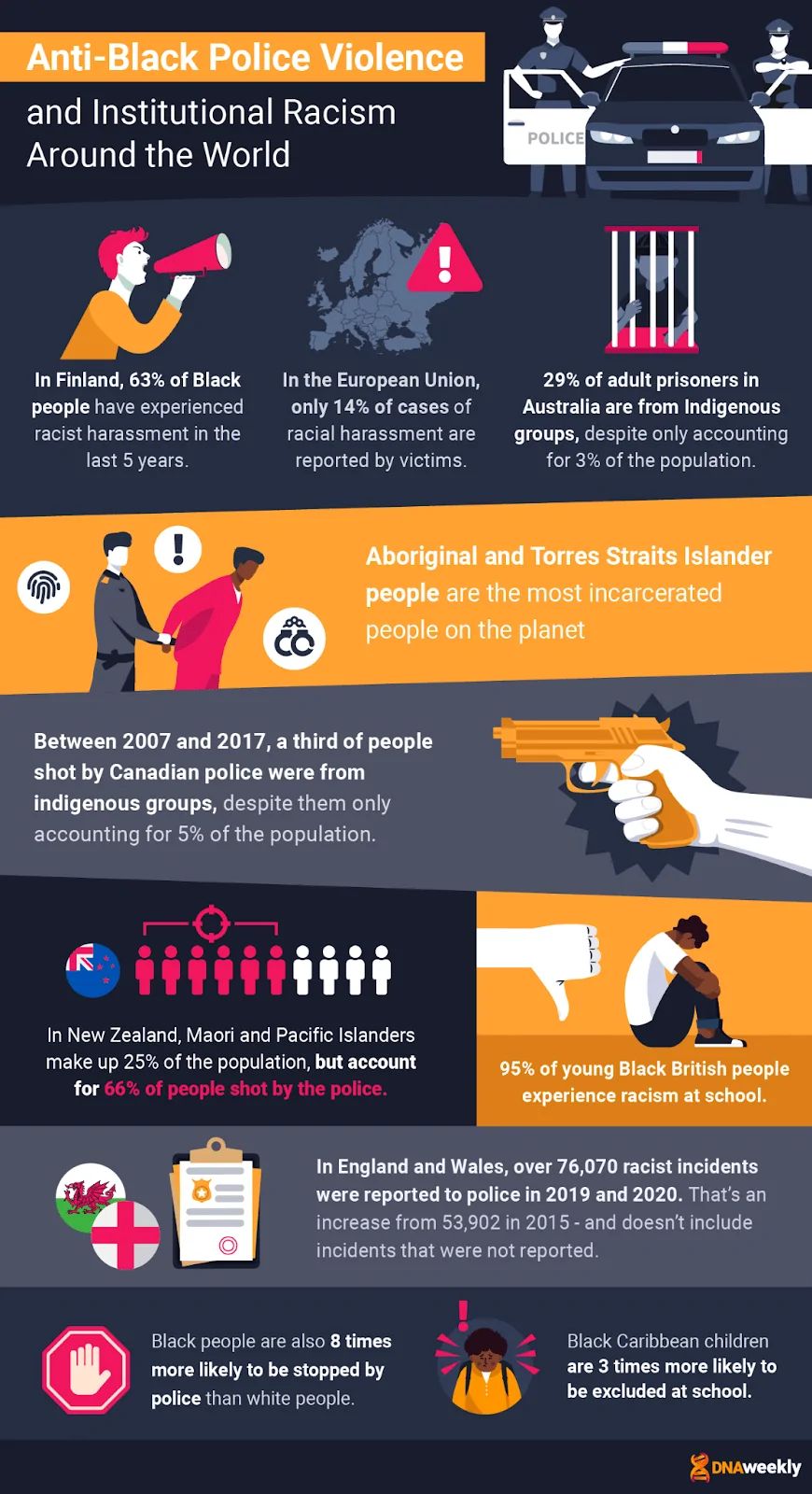
The Wider Effects of Institutional Racism
We must stress that Black people are not singled out because of a pattern of behavior amongst the community.
Instead, they are singled out by the unjust systems of belief and policy within nations. In fact, the Macpherson report concluded that police in the UK were institutionally racist.
A YouGov survey found that 2 in 5 (41%) of police officers in the UK believe racial stereotypes are true. Police officers essentially operate based on these instincts, which are informed by racist beliefs.
RELATED: Black People Should Be Very Suspicious Of The COVID-19 Vaccine
Government laws and policies can also be racist. In America, the Black Code laws existed in some form until the 1960s.
These were a set of restrictive laws that limited the freedoms of African Americans and their access to a fair wage and labor.
New laws are still drafted in America today that disproportionately affect Black people. For example, new voter ID registration requires voters to have a government-mandated ID.
25% of Black Americans, as opposed to 8% of white Americans, currently do not own a government-mandated ID.
Structural and institutional racism can result in worse housing and healthcare for Black people, too.
Between 1934 and 1962, there was $120 billion worth of housing loans granted in the US. Just 2% of these loans went to non-white families.
The result is poorer neighborhoods for ethnic minorities with worse health benefits and social institutions.
Black Americans are exposed to 1.5 times more sooty pollution than white Americans. They also face a worse standard of healthcare, according to research from Jamila Taylor.
This is the same in other countries. In the UK, 46% of Black households live in poverty, compared to 1 in 5 white families.
That means the Black community is exposed to worse job security (with greater job losses), pay cuts, and a lower value of work.
Essentially, whether in America or abroad, institutional and structural racism unfairly disadvantage Black people. This type of discrimination is subtle on the surface, but it affects the life of every ethnic minority.
We must do what we can to give everyone an equal footing, and that can be achieved by supporting Black Lives Matter.
3. Microaggressions, Individual Racism, and Damaging Outcomes
Racism is not only structural and institutionalized, it is also experienced directly from one individual to another.
Structural racism and institutional racism eventually lead to examples of individual racism.
Individuals are informed by the structures in which they grow up — resulting in intolerance and inequality.
Microaggressions are individual racist acts that are supplemented by structural racism. These are subtle verbal, behavioral, or environmental racist actions that may be intentional or unintentional.
There are three types:
- Microassaults are intentional examples of discriminatory behavior that are not intended to be offensive, such as a racist joke.
- Microinsults are unintentionally discriminatory but are seeded in ignorance or naivety. This could be a reference to a racial stereotype that the person believes to be true.
- Finally, microinvalidations describe a situation where someone undermines the experience of another ethnic group. It could be the claim that racism is “not that bad” in a certain area or country.
Microaggressions and everyday racism could take the form of something as simple as a Black person not being served quickly enough at a bar because of their race, either consciously or subconsciously.
The point is racism can be subtle, but that doesn’t make it any less damaging.
Damaging Outcomes Mean We Must Support BLM
According to a Gallup survey, a massive proportion of the Black community say they are exposed to microaggressions regularly.
32% of Black adults believe people have acted like they were “better than you.” Another 25% acted as if they thought “you are not smart.” 1 in 5 note that they have been treated with less courtesy and respect than others.
The effects of racism on the individual are damaging, whether that is individual, structural, or institutionalized racism.
People who experience microaggressions are more likely to experience higher levels of depression and trauma.
In general, Black people are more likely to self-harm, have suicidal thoughts, and have anxiety or depression, because of racism.
Mortality and morbidity rates are even higher for those that endure the stress of chronic racism, the kind of racism that is perpetuated through structures and institutions that feel immovable, like the police force.
On a social, economic, and individual level —however subtle — the effects of racism are widespread and massively damaging.
The only way to see tangible reductions in the damage that racism can cause is through an organized, concerted effort, and that’s a huge reason why you need to support BLM.
3. BLM is Grassroots
The Black Lives Matter movement was born from a hashtag in 2013, following the acquittal of George Zimmerman.
Trayvon Martin, a 17-year-old unarmed Black teenager, was gunned down by 28-year-old officer George Zimmerman after a physical altercation on February 26th, 2012.
Following the death of Martin and the subsequent trial of Zimmerman, the officer claimed self-defense, for which he was released without charge.
Alicia Garza, Patrisse Cullors, and Opal Tometi — three Black women — began using #BlackLivesMatter to voice their resistance to the trial results. The tag would soon gain widespread use.
The movement grew nationally in 2014, after the shootings of Michael Brown in Missouri and Eric Garner in New York City.
BLM members were ever-present at the Ferguson protests, leading a string of intense and vocal demonstrations in response to the unjust killing of Michael Brown by police officers.
The protests sparked a national debate about police brutality and race, and thrust BLM into the public eye.
Over the next 2 years, BLM went on to expand its project with a network of more than 30 local chapters around America.
Now, BLM is a worldwide organization, but we must acknowledge that BLM has garnered grassroots support and participation all over the USA. A movement for the people, by the people.
Black Lives Matter is a decentralized, independently-funded organization. That means there is no hierarchical structure; BLM does not have leaders, all of its members have an equal voice. BLM practices what it preaches.
With no financial support from major institutions or governments, BLM relies on charitable donations and support from the public. Money goes a long way to ensuring the success of the movement.
BLM is an organization with local goals of international importance. An organization with the goal to “eradicate white supremacy and build local power to intervene in violence inflicted on Black communities.”
BLM is not a big business or some plastic organization, it is born from the voices of real people within our communities.
It is a grassroots organization that relies on your support. That’s why we must do what we can to give money, time, or spread the word of Black Lives Matter.
4. BLM is Inspiring Real Change
Over the years, BLM has grown from an unknown movement to an international force. It has inspired changes in politics, business, entertainment, and police forces— not to mention educating millions on the extent of social injustices.
We have seen big changes sparked by BLM since the George Floyd murder, but even before then, BLM was doing great things to lay the groundwork for what it is today.
Pre-George Floyd
Black Lives Matter was gathering momentum for several years before the murder of George Floyd. Here is a timeline of significant events that laid the foundations for the movement today.
2014 | BLM amassed widespread recognition after peaceful protests and riots about the deaths of Eric Garner and Michael Brown.
The BLM ride, organized by co-founder Patrisse Cullors, brought together more than 600 people who marched down to the site of Mike Brown’s murder.
2015 | Protests against the killings of Walter Scott, Freddie Gray, and Meagan Hockaday coupled groundbreaking protests about the deaths of 21 trans people that year in the USA, 13 of whom were Black.
This demonstrates BLM’s support for even the most sidelined in our community. In another incident, an officer is forced to resign under pressure from BLM.
2016 | Over 100 BLM protests took place in early July 2016, following the deaths of Deborah Danner, Alton Sterling, and Philando Castile.
BLM garners support from huge sports stars, with Lebron James exclaiming that “enough is enough” at an awards ceremony. Colin Kaepernick, an NFL player, took a knee in support of BLM during the American national anthem.
2017 | A BLM exhibition celebrates Black artists through 30 pieces of excellent Black art. The event points towards the way BLM has changed perceptions by celebrating Black history.
In the same year, BLM continued to offer resistance to the acquittals of guilty officers.
2018 | #BlackLivesMatter has been tweeted nearly 30 million times since 2013.
2019 | BLM gained support from 60 high-profile stars in the music and entertainment industry, who came together to advocate for rapper 21 Savage’s release from prison.
BLM is now a mainstream and well-known movement.
Talking about the growth of BLM over this period, co-founder Patrisse Cullors said:
“[BLM] has popularised civil disobedience and the need to put our bodies on the line… With things like the Women’s March, and Me Too, and March for our Lives, all of these movements, their foundations are in Black Lives Matter.”
From 2013-2019, Black Lives Matter became the biggest Black-rights movement since the civil rights movement of the 1960s. It’s this support that has facilitated the big changes we are now seeing today.
Post-George Floyd
In 2020, the killing of George Floyd by police officer Derek Chauvin sparked some of the most widespread support for Black rights seen in more than 100 years.
Diverse, international protests propelled Black Lives Matter into becoming an organization whose message is heard in all corners of the world.
Protests were filled with people of all ethnic backgrounds and nationalities, which is symbolic of how the movement has resonated with so many people.
Following the death of George Floyd, general support for BLM across all ethnic groups increased massively:
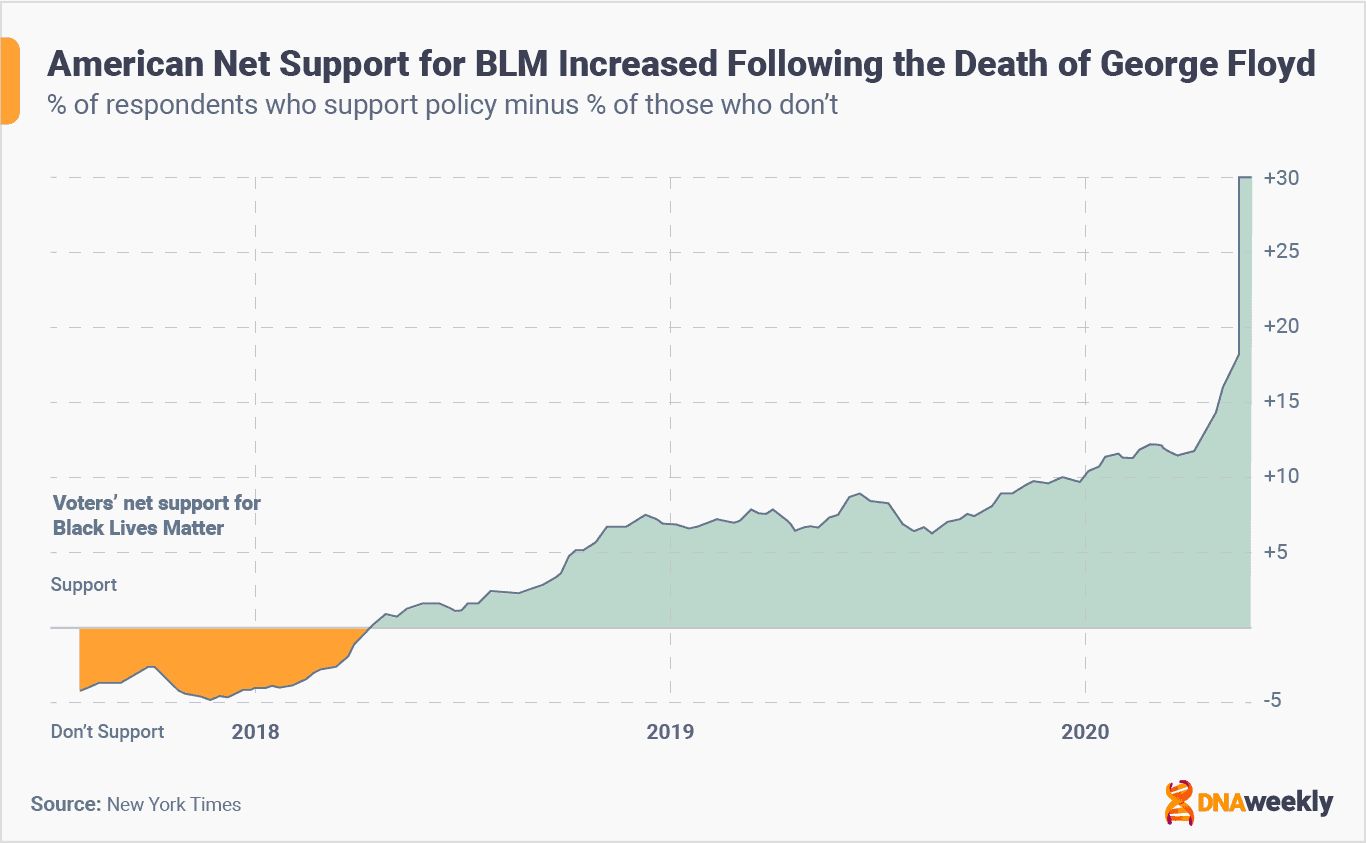
In the past, Chauvin may have been acquitted for his despicable actions, or at the very least forced to resign.
Under intense pressure, the officer in question was charged with second-and third-degree murder, along with manslaughter.
Derek Chauvin has since undergone trial and has been found guilty of all charges brought against him.
His accomplices were also charged with aiding and abetting all counts of murder, another major breakthrough in the governance of police brutality.
The event has sparked a wave of reforms across laws and institutions throughout America:
Police Reforms & Laws
- Police funding is cut in forces throughout the US. The LAPD relocated $133 million into services aimed at helping disenfranchised Black and Latino communities. Other cities, including New York, Baltimore, Portland, Philadelphia, Seattle, San Francisco, and Washington D.C. also defund their police.
- Chokehold maneuvers, which are used by US police, are banned in 31 more cities throughout the nation. In total, 62 out of America’s 100 biggest cities have now banned chokeholds.
- The George Floyd Justice in Policing Act of 2020 brings in numerous changes to federal police officers. The law prohibits racial and religious profiling and mandates training on these issues, along with other changes such as forcing the use of cameras upon federal officers and setting up task forces to identify and report police brutality.
- The George Floyd Law Enforcement Trust and Integrity Act is a subsection of the justice in policing act, which fosters better relations between police forces and communities to reduce police brutality.
- The Ending Qualified Immunity Act is a proposed law to end qualified immunity in the US. Qualified immunity protects officers and governments from being personally responsible for illegal or problematic acts performed in the line of duty.
- The Executive Order on Safe Policing for Safe Communities (executive order 13929) requires that state, local, and university law enforcement agencies are certified by independent credentialing companies. This aims to hold police accountable and build trust in communities.
- The Breonna Law in Louisville bans ‘no knock’ search warrants. The same type of police search that resulted in Breonna Taylor’s death.
- New York City repeals law 50-a, effectively removing obstruction to the public scrutiny of any officer’s disciplinary record.
- “Duty-to-intervene” policies are strengthened in Detroit, Buffalo, Dallas, and Charlotte. This encourages colleagues to “step in” if another officer is acting incorrectly.
- A database was created to track and document police violence at Black Lives Matter protests, which has led to numerous charges against officers.
Racist Symbolism
- Racist relics are removed across the world, including monuments and even street names. In America, statues of slavers, colonizers, and Confederate leaders are removed. Among these are the famous statues of Confederate General Stonewall Jackson in Virginia, and Confederate President Jefferson Davis in Kentucky.
- The Confederate flag is banned at US military bases and facilities around the world. Any bases named after Confederate officers have had their names changed. Mississippi changes its state flag so that it does not include elements of the Confederate flag, while NASCAR bans its use as well.
Other Institutions
- Private and public institutions are forced to address and evaluate their own role in racism, including their role in perpetuating racist ideologies. This is a global event.
- Schools adopt racial equality practices, notably in Milwaukee, Indianapolis, San Diego, and Philadelphia. This means they are desegregated, with racial gaps among students closed. There are also reforms in the way schools teach, discipline, hire and train students and staff.
- Schools phase out the presence of police officers on-campus, notably in Seattle, Oakland, Denver, Minneapolis, and Milwaukee. They achieve this by ending contracts with local police forces, and by placing mental health staff and support workers on campus instead of officers.
- Schools change their syllabus to include more diverse subjects, people, and histories. Some schools also place anti-racist teachings onto their curriculum, specifically in Denver and Spokane.
Sports & Entertainment
- Different sports and sports leagues across the world demonstrate constant solidarity with BLM. In European football, players take the knee before every match. In the NFL, league chiefs apologize for condemning players like Colin Kaepernick for speaking out against racism and police brutality.
- The Washington NFL franchise changes its name from the “Washington Redskins” to the “Washington Football Team.” The move comes because of the racist connotations of the term “redskins.”
- Paramount cancels its TV show Cops over claims it glorifies the policing of ethnic minorities.
- The famous TV show Sesame Street holds an event that teaches kids about racism, privilege, and protest.
- Across the world, people champion Black arts and invest in Black businesses. It’s a global celebration and appreciation of Black culture.
- Disney changes the name (and theme) of its “Splash Mountain” ride because of its ties to a racist film. Instead, the ride becomes themed around The Princess and the Frog, a recent Disney film that stars a Black princess.
- Shows including 30 Rock, The Office, and Scrubs, pull any episodes featuring blackface from streaming sites like Netflix.
- Jenny Slate and Kristen Bell withdraw from their biracial roles on the American TV show “Big Mouth,” giving their roles to Black actors.
- In the Oscars, 9 out of 23 Oscar nominations were for ethnic minorities, with Black actor Daniel Kaluya winning an Oscar. No Black actors were nominated in 2016.
In late November 2020, a high number of Black voters helped to vote in Joe Biden, who promises reforms in light of the recent Black Lives Matter protests.
Following the sentencing of Derek Chauvin, the man who murdered George Floyd, Biden said that it was “a moment of significant change.”
He continued, “It’s not enough. We can’t stop here. We’re going to deliver real change and reform.”
BLM began 2021 with a nomination for the Nobel Peace Prize by Norweigan MP Petter Eide, who cited the organization as “the strongest global force against racial injustice.”
It’s clear that Black Lives Matter is accelerating reforms across oppressive institutions and social systems. The organization’s progress is constant and is now wielding tangible results.
This is another reason why you need to support BLM. It is not an unproven movement, it’s a proper vehicle for change. By supporting BLM you will help maintain the wave of progress that we are now seeing all over the planet. read more…

